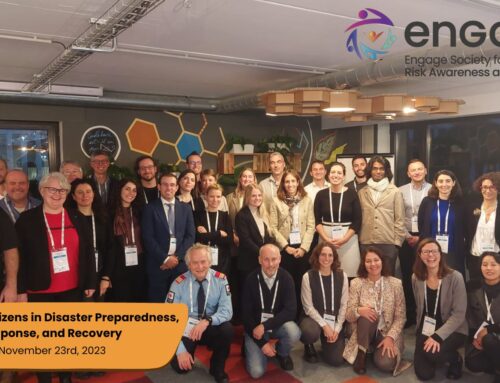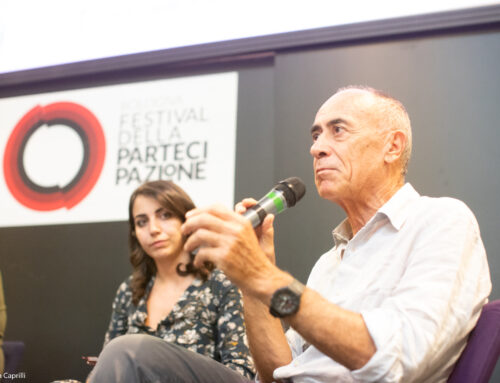One2Many, an Everbridge Company, is a partner in the ENGAGE project with over 20 years of experience in public warning implementation. Within the framework of ENGAGE, this extensive experience has been applied to a new horizon: a prototype of an AI-enabled chatbot to advance emergency management and enhance societal resilience. This blog post will provide an overview of the process in which the chatbot was developed and will discuss its future implications in disaster management.
The origin and evolution of an idea
Analyzing the role of AI in the form of chatbots and its pertinence to improving disaster risk resilience began at Tel Aviv University- where a broad set of 45 chatbot examples were studied and resulted in the development of a chatbot blueprint. The conclusions of this research helped to answer an underlying question of the ENGAGE project: Can AI-enabled technologies contribute to building societal resilience? One2Many and Everbridge concluded that the answer was a positive one, but relied on a cautious adoption of the blueprint as well as bearing three challenges in mind: trust, rapidity, and effectiveness.
- Trust: In an age of information overload and sometimes confusing or misleading news, a chatbot can ensure that a trustworthy message reaches the target population by identifying false information and by communicating from an officially recognized source- a government agency that oversees emergency management.
- Rapidity: A chatbot not only allows emergency authorities to continuously communicate with citizens throughout the disaster management cycle, which contributes to building relationships and trust, but it also allows them to communicate key information rapidly and effectively. In a disaster, time is of the essence, and being able to quickly convey important information can go a long way towards ensuring more people are brought to safety and the scale of loss and damage is reduced.
- Effectiveness: In an emergency, there may be longer wait times when trying to reach emergency services. A chatbot could be an effective way to ensure that citizens are still able to receive information that allows them to make informed decisions.
It was on these conclusions that Menno Bot, Solution Architect at One2Many, derived the idea for a dynamic chatbot which could utilize the Public Warning Center of One2Many/Everbridge and be linked to a cell broadcast message. This idea was built upon by Koen Voegel, who helped to narrow the research scope in order to move from a blueprint to a convincing prototype of a chatbot applied to public warning cell-broadcast systems. Cell broadcast is the fastest and most delivered alert as it reaches 100% of the population owning a mobile phone in range of a mobile cell. The chatbot prototype helps to address its’ key shortcoming: its nature of a one-way technology, unable to profile the people in the emergency, their specific needs, and their specific questions, in favor of a rapid, immediately disseminated alert.
The rippled waves of technological progress
While the project-ENGAGE consortium advances into the prototype research and approaches the last stretch of a three-year project, the world technological advancements in AI do not stop, opening new opportunities and new challenges. OpenAI aims to create safe artificial general intelligence that benefits all of humanity. ChatGPT is a chatbot which can handle all sorts of questions and give detailed responses, “follow up questions, admit mistakes, challenge incorrect premises, and reject inappropriate requests”. Solange Van der Kolff, Software Engineer at One2Many, has taken over the chatbot prototype research from Koen and has run an integration of ChatGTP in the chatbot prototype during a hackathon.
Everbridge organizes frequent hackathons, which are events where a large number of people meet to engage in collaborative computer programming. Several aspects of AI were experimented with at a recent hackathon, and colleagues at One2Many/Everbridge collected data with the aim of training AI models. This resulted in the development of a data scraping tool to collect instructions from the United States’ Federal Emergency Management Agency (FEMA) in regard to hazards- including historical FEMA alerts which carry detailed directives. The aim of doing this is to incorporate such a model into the chatbot in order to provide the context of the emergency to the AI-tool based on the questions of the user. The outcome was successful, with ChatGPT providing accurate answers. This indicates that the use of ChatGPT could include FEMA instructions and could potentially be trained using data from One2Many/Everbridge. However, it is important to note that there is a potential for a chatbot to answer in very “creative” and broad terms, even when the context is fully provided.
Additional research will be needed to perfect the prototype, with the help of ENGAGE’s Knowledge and Innovation Community of Practice (Ki-CoP) and the subsequent exercises that will take place this year in Romania and ultimately in Norway, one of the 24 countries where our software already powers the national Public Warning system.
Authors: Rachele Gianfranchi, Menno Bot, Solange Van der Kolff (One2Many/Everbridge)





